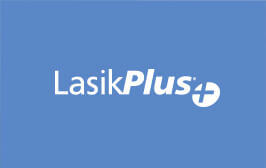-
See the Difference: Save $1,000 on LASIK , Find More
*Must mention this promotion and be treated in October of 2024 to qualify. $1,000 off for both eyes on standard Wavelight price, $500 off for one eye. Cannot be combined with any other offers.
Innovations Continue to Improve LASIK Effectiveness
It’s normal to feel a twinge of nervousness when researching LASIK. After all, it’s a medical procedure that affects your vision. But if you choose a highly qualified surgeon who uses the latest technology, you can breathe a sigh of relief.
Today, most LASIK surgeries are all-laser procedures that use no blades, giving you the peace of mind that comes with a technique that uses computer-controlled precision to treat your vision. And the LASIK field is founded on 40 years of innovation in a constant effort to continually improve the procedure’s safety and effectiveness.
Then & Now: Advancements in Eye Surgery Technology
Mid-1970s: One of LASIK’s forbearers was radial keratotomy. The procedure cost was approximately $8,000 and was performed by a surgeon using a scalpel. To monitor progress and avoid complications, the procedure was first performed on one eye at a time. The patient would then wait two weeks for the procedure to be performed on the other eye.
1988: LASIK surgeons began using a microkeratome, an extremely thin blade, to cut a flap in the upper layer of the cornea, followed by an excimer laser that removed tissue from the eye’s surface and reshaped the underlying cornea to match the patient’s prescription. The surgery took approximately 15 minutes.
2000s-Today: Doctors using advanced technology and techniques now use an all-laser technique, as the bladed microkeratome method has become obsolete. Instead of creating the corneal flap with a blade, the surgeon uses a femtosecond laser. This bladeless approach creates a more consistent incision and is a great option for patients with thin corneas who previously weren’t good LASIK candidates. Some experts believe bladeless LASIK is more precise, which can be reassuring for patients and surgeons. Another technology available is Wavefront LASIK, or custom LASIK, approved by the FDA in 2002. The widely available procedure uses three-dimensional measurements of the eyes to create a laser vision correction treatment tailored to each patient.
The Future of LASIK: Advancements continue as technology and the technique are constantly monitored to ensure the best possible procedure is available. For example, corneal cross-linking is an effective technique used to strengthen the cornea, and is now being considered for use in potential LASIK patients who would need greater amounts of corneal tissue removed. Combining cornea cross-linking with the LASIK procedure allows patients with thinner corneas and keratoconus to now be considered as candidates for LASIK.
LASIK Statistics
The technology and processes have advanced over the years, and a quick review of some data proves that these innovations are impactful. As you research the LASIK procedure, consider the following statistics to calm any of your concerns.
1) 700,000 Americans undergo LASIK each year.
2) More than 95 percent of LASIK patients are satisfied with their results.
3) 55.3 percent of LASIK patients achieve 20/20 visual acuity or better, while more than 92 percent achieve 20/40 visual acuity or better.
4) LASIK makes up 96 percent of refractive procedures performed today.
Consult a Specialist
Even with technological advances and impressive statistics, LASIK is still surgery, and like all surgeries, involves some risks. Side effects can include dry eyes and reduced night vision; however, most issues are temporary and improve as the eyes heal.
Consult a qualified LASIK specialist to learn if the procedure is right for you and to answer your questions. They can help turn your anxiety into the exhilaration of improved vision.
YOU MIGHT ALSO LIKE...
VISION CENTERS NEAR ME
Enter your zip code, city, or a doctor name below to find a vision center.
Find out if LASIK is right for you
Congratulations!
Your vision issues can most likely be corrected with a LASIK procedure. Schedule a free consultation today.
Answer 5 simple questions to see if you are a candidate
What is your age group?
Do you wear...
With corrective lenses, do you have...
Have you ever been told that you have astigmatism?
Have you ever been told that you have dry eyes?
Request an Information Kit
Learn about your surgeon, the latest advanced technology, procedures, options and benefits, financing options, and what to expect from your LASIKPlus experience.



![Avoid Eye Irritation & Keep Eye Heath [Tips]](/wp-content/uploads/2017/01/blog-50.1-266x168.jpg)





